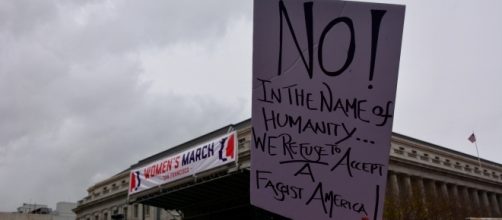750,000 is a large number for a march. Yet the residents of Los Angeles witnessed just such an event during the Women's March on Saturday, January 21. All over the country and on all seven continents, women and their supporters gathered to protest the reluctance of the American government to give females equality in the eyes of the law and society. This movement, and reactions to it, are important. Historically, socially, and politically, the Women's March made an impact.
The largest march in history
The Women's March is reportedly the largest march in history, with estimates reporting the numbers almost reaching 3 million participants. And yet, officials in the Washington DC police say that there were no arrests made.
The fact that 500,000 people can march in the nation's politically charged capitol and be completely non-violent is incredibly significant. There were many allusions to Martin Luther King, Jr.'s peaceful protest policy within the marches. Too quickly, protests can swell into riots, and throw their own causes into bad light. The women kept their cool, something male politicians might learn.
But there is other history here. For some women, the struggle for abortion rights, birth control rights, sexual and domestic abuse protection and equal pay has been prolonged for decades. Women, especially women of color and those in LGBTQ+ community, have been dealt with as second class citizens. Even now, with President Trump defunding Planned Parenthood on the anniversary of the historic Roe v. Wade decision, women still cannot get their voices heard and their bodies free.
The Women's March combined those voices, in the hopes that all together, they could make an impact.
March fights societal subordination
We have all known for a long time that society is repressive to women. Maybe we do not think about it every day, but it is reinforced constantly. The "pink tax" makes even necessities like tampons and pads extremely expensive.
Women are supposed to be objects of sexual desire, but are ridiculed for being sexual. Women of color and curvy women have few examples of role models, as the "ideal woman" is often white, blond, and very thin. LGBTQ+ women have had incredible difficulties, including the recent transgender use of bathrooms issue.
In bringing together such a large participation of people, the Women's March was adamant in including the entire LGBTQ+ community, all body types, and women of color.
This unification of minorities was incredible, and gave the march much more significance. Instead of solely protesting the lack of women's rights, there were speeches and chants about LGBTQ+ and racial discrimination. There was no picture of an 'ideal woman' because everyone at the march was their own woman.
Yet not everyone agrees with the movement's actions. Social media has simply exploded with debates over the legitimacy of the women's march. President Trump has denounced the movement, saying that the women should've voted if they were so angry over the election results. Others have expressed the sentiment of "why fight a losing battle," and criticizing the celebrities such as Madonna who used explicit language in their speeches.
So, march to freedom or doom?
The Women's March was historically significant, and clearly raised the spirits of millions of people. It also succeeded in bringing up deep societal problems surrounding the women's movement. Perhaps it did not mean that politicians immediately changed their views, that everyone began wearing flower crowns and celebrating the Second Sexual Revolution. There will be further trials and tribulations, but the Women's March was a solid foundation for political and social discourse on the future of America and the world.

